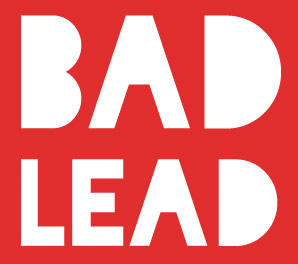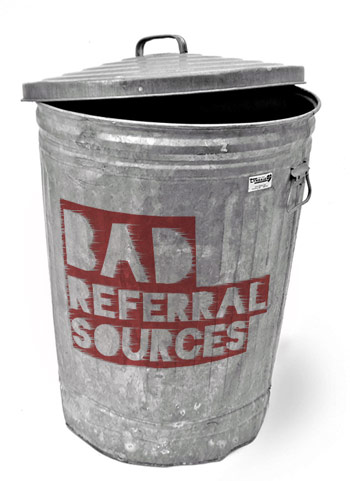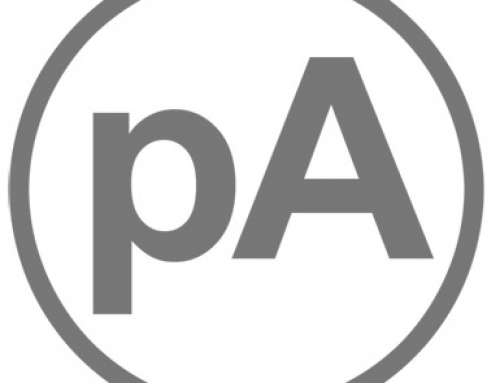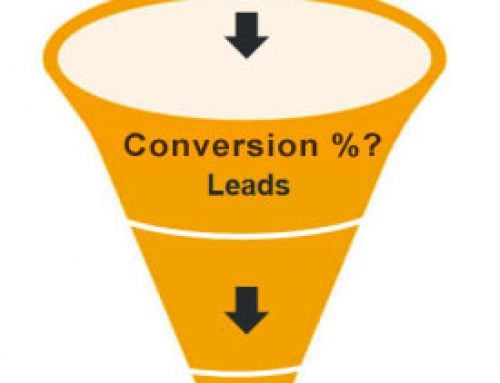 I’m not sure which is more terrifying: a bored salesperson, or one who is frustrated by a day of contacting a string of bad leads. But what can you do about it? Bad leads are part of doing business, right?
I’m not sure which is more terrifying: a bored salesperson, or one who is frustrated by a day of contacting a string of bad leads. But what can you do about it? Bad leads are part of doing business, right?
Not necessarily.
There are many ways to weed out bad leads before they reach the point of a contact attempt, and therefore waste your sales team’s time.
When a business gets an increase in bad leads, or an overall decrease in the number of leads coming in, that’s when I usually get a called and asked, “How do I get more high quality leads? Right now?”
I never answer immediately. Mainly for a reason that gets overlooked when people are in a marketing panic: scrounging for more leads can be a big a waste of money. So rather than talking about advertising or PR ideas I start by asking them to give me their lead quality scores based on lead source.
… that’s the point when I usually get silence on the other end of the line.
“I’m not sure I have that information” (or), “How do I go about figuring that out?” are the two most common replies that follow the awkward pause. My point is this: when measuring the success of your marketing campaigns, you need to factor in the lead quality – how many leads actually convert to clients – as well as the revenue and lead count gathered from each source.
Marketing Success: Don’t Panic.
When I was in New York we encountered one of those times when incoming leads dropped well below average and it looked as though our goals for that quarter were impossible to reach.
We panicked…
The result was a one-month, $45,000 subway campaign. The phones rang off the hook. I tell you, it was one of the busiest and most exciting months that location had in history. With all that activity in the office no one had any doubts that we were going to rock the house with the numbers.
At the end of that month, only 2 of about 450 leads from that campaign converted to a sale. Two. It was the epitome of Chinese food marketing campaigns.
The problem was that in a state of panic we didn’t do one of the most fundamental tasks of smart marketing: measure the success of all your campaigns, rank them, and in times of trouble put money in places that create sales, not just leads. A bad lead is wasted money. Pure and simple.
Fine Tune Marketing: Decrease Bad Leads

Quality leads trump quantity.
To get more success out of your marketing, 99% of the time you need to cut down on your leads. Counter-intuitive? Yes, but think of it like cleaning out your closet before you can put in that new shelve organizing unit thingy. Marketing numbers, like life and vegetable gardens, should be kept simple, relatively clean, and positive.
If you are currently unable to weed out leads that are wasting your time (and therefore money), then you you must start by improving your referral source capture: better landing pages, better tagging, better analytics.
You cannot accurately measure marketing success without including lead quality. When you have better referral source date, then you can filter out sources that deliver bad leads and have your team focus on the good ones. In turn, that frees up more time and resources so that you can thereafter increase your lead count.
Moral: clean the closet first. Identify what bad leads need to go to the trash and which to the Salvation Army, then go buy all the new, high-quality leads.
Measuring Lead Quality: Keep It Simple
If you have someone throwing a 5-axis chart at you that require an advanced degree in physics to understand, then there’s a good chance they’re trying to hide something (or more likely they’re digging deep to find a justification for all the money you just spent on the campaign).
Marketing reports don’t have to be complex. Marketing strategies don’t require that you’re cool and brilliant, they require that you make smart decisions and never take your eyes off the ball. If you care about your business and your clients than you probably understand your customer base better than anyone. Use that knowledge to target new leads, and then use the data filter out the bad ones.
Keep the process of filtering out bad leads simple by focussing on conversion rates. Use that as you method of scoring lead quality for each referral source; as a simple percentile in whole numbers:
- If Source A converts 2 out of 100, then it has a score of 1, (1% conversion rate).
- If Source B coverts 4 out of 20 leads, then it has a score of 20, (20% conversion rate).
- etc.
See? Simple.

If a referral source doesn’t covert to clients: trash it (or recycle).
Now take the money you spent on each marketing / advertising source for a given period and get two numbers: cost per lead (CPL) and cost per sale (CPS … you also see this as CPA, cost per action. I used CPS because I dislike accounting).
Now you have three numbers for each referrals source: conversion rate or score (your lead quality), cost per lead, and cost per sale. Of those three, cost per lead is the least valuable, because as we saw with our NYC subway panic, leads alone aren’t sales.
You don’t have to plug those numbers into any fancy equation or anything. You simply need them as a reference so your brain — which is better than any marketing metrics algorithm — can get a good impression of the effectiveness of each marketing channel.
If over multiple reporting periods you can identify particular referral sources where your marketing campaigns returned only bad leads (i.e. low conversion rates), then that’s the stuff in the closet you need to throw away first. At bare minimum, stop running ads for awhile, and let the source rest for awhile like soil in a farm because you might have saturated that source. When you’re done trashing what doesn’t work you’ll have some freed up ad dollars that you can put in sources you know do work.
Never Stop Measuring Lead Quality
Measuring the quality of leads you get from a source is an on-going process. I have worked with many sources that were astounding at first, but then over time the lead quality became worse than the Russian Ruble. It’s very easy to get comfortable with your marketing campaigns, especially when times are good. “If it ain’t broke, don’t fix it.” is a wonderful phrase that has lost many-a-marketing managers their jobs. Marketing reports that do matter are the ones that give you those three key numbers: conversion rate, cost per lead, and cost per sale. Never take your eyes off those numbers. If you watch them, then your lead quality will improve, your time will be better spent focussing on good leads, and your sales team will never get bored.








